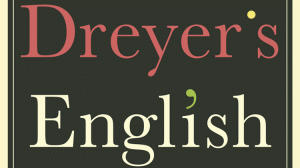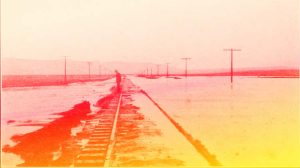While I was being gifted a tiny grocery store carrot cake for my fifteenth birthday in a park in Connecticut, still on the road myself, Jan Kerouac passed away. It was June 5, 1996. I had no idea who Jan Kerouac was, wouldn’t know for another 8 or so years. But I was living a life strikingly similar to hers, in an alternate universe.
Kerouac was gifted with looks, talent, and an astounding memory, though she didn’t live past her early 40’s. I recently re-read her debut memoir, Baby Driver, drinking in her fever-pitched tales like wine in under two days, and was possessed yet again by her striking voice in my head. In a whirlwind cadence, she documents everything she experienced and saw through her early years, sparing the reader no detail. Sometimes, I wonder how, with all the drugs she ingested, from peyote to heroin, she could remember it all so well, in such a linear fashion.
Baby Driver starts deep in Mexico. Kerouac is pregnant, and fights off scorpions in the sweltering heat, amidst tall plants, in a shack, with two tattered dresses to her name. She is fifteen years old. When she gives birth, her baby is stillborn. As the book proceeds, each chapter flips between her childhood upbringing in Manhattan and the years after Mexico–like reading two stories in one, each chapter sends you back to the place you left and gives you room to ponder the next, a craft that is extremely effective for Kerouac’s rich material.
Though Jan Kerouac is very much the daughter of her father—in spite of barely having spent any time with the man—her journey is uniquely her own. It centers on her role in the various relationships she played a part in, and is peppered with her complex reflections on human nature.
A life was lived to the brink, no adventure turned down in the twenty years that take place between the pages of Baby Driver. Kerouac sees it all, from the concrete slum life of New York City to a quiet hammock life in Washington and a temporary respite with royalty in South America.
 From 15-year old housewife to professional massage parlor hooker, Kerouac slips on costumes, lovers and people to try them on for size, before flitting off to the next novel experience, person or geographic location. An itch to wander, a need to move permeates, reveals her lust for life and for experience.
From 15-year old housewife to professional massage parlor hooker, Kerouac slips on costumes, lovers and people to try them on for size, before flitting off to the next novel experience, person or geographic location. An itch to wander, a need to move permeates, reveals her lust for life and for experience.
She grows up shuffling from tenement to tenement in the Lower East Side, her single mom, Kerouac’s wife, raising her on what little she can cobble from waitress jobs. Her absent father never appears, except to ask her mother to prove paternity when she asks for child support to pay for his daughter. As a result, he plays only a bit part in the book, but we don’t need him here. Kerouac’s own adventures stand alone.
There’s an airy sense of detachment in Kerouac’s reports on her experiences, a sense of humor throughout. She describes the pivotal characters in her life with precision. She meets John, her first husband, one day in her tenement building when she is looking for a can opener, and she adds in the detail of the way he moves his bun adorned head up, down, side to side, in a physical expression of pleasure he’d picked up in India.
When she meets her father for the second or third time, on her way to Mexico with her husband, he is nursing whiskey, inches from the television, shouting for his wife to turn the volume down. Uncomfortable talking to Jan, and unable to raise his blue eyes to her blue eyes, he comments on John’s “Genghis Khan” hairdo instead.
Kerouac describes the man who got her pregnant, Robert, and his rigid formality, in spite of being a hoppin’ hash dealer—an epiphany revealed to her one night as she “loses it” on acid. She shows us a family setting in New Mexico, everyone sitting around the kitchen table—except this family of friends is not cooking or serving dinner. They are readying their works for shooting dope, and this is her temporary family of friends.
There are times where you feel Kerouac’s intensity of perception, for example, when she is riding a bus in New York as a child, and suddenly realizes that the universe is without end. Sometimes, as she recounts drug epiphanies, you wonder if she might have perchance pushed the bounds of her consciousness a little too far in an attempt at expansion, and when a temporary amnesia besieges her in Ecuador, I wondered if she hadn’t simply taken a few too many hits of acid in her youth. Yet, looking at her tales with an open mind, I began to realize that Kerouac confesses these little details in earnest, because these were the moments where she came to grips with the profundities of her own life on this plane.
Kerouac finally reads her father’s book, On the Road one night when she is only 13 or 14, confined to the hospital because of hepatitis, the current ward of a correctional facility. When the doctor finds out she is Kerouac’s daughter, he brings her her father’s book, incredulous that she hasn’t yet read it. Curious, Kerouac, instead of asking the nurse for more Seconal, which she had been planning to pocket, reads it in one night. She enjoys it, and decides that it’s OK if her father abandoned her. He was off doing important things.
When she learns of her father’s death, shortly after her final visit with him, Kerouac is overwhelmed by the realization that he, like her stillborn child at age 15, was half-formed, then lost.
Baby Driver is a pleasurable read, conflicted, deep, personal–everything you want in a memoir. That she is the daughter of Jack Kerouac is readily apparent in her thrill-seeking adventurousness, her need to live life to the utmost degree, yet she is quintessentially her own person. After reading the book for the first time, I judged Kerouac for his actions, for abandoning his daughter when she could have benefited from having a mentor in her life, but I appreciate that through inheriting his last name, Jan had that much more chance of being heard through her own words and didn’t end up telling her captivating story in obscurity.




